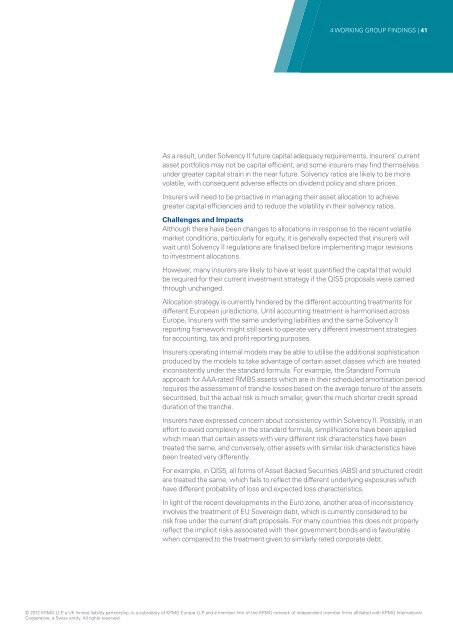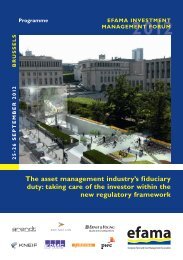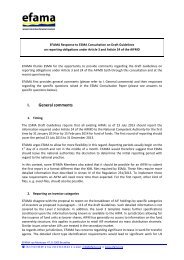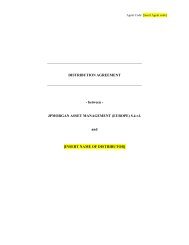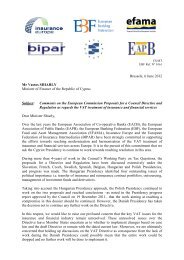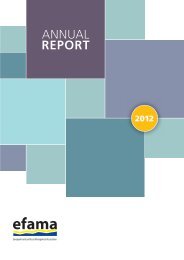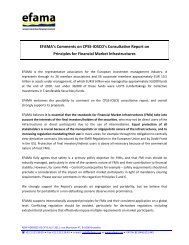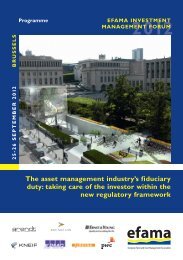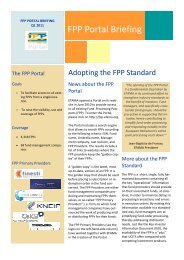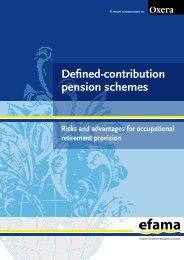EFAMA KPMG Solvency II Report
EFAMA KPMG Solvency II Report
EFAMA KPMG Solvency II Report
Create successful ePaper yourself
Turn your PDF publications into a flip-book with our unique Google optimized e-Paper software.
4 WORKING GROUP FINDINGS | 41<br />
As a result, under <strong>Solvency</strong> <strong>II</strong> future capital adequacy requirements, insurers’ current<br />
asset portfolios may not be capital efficient, and some insurers may fi nd themselves<br />
under greater capital strain in the near future. <strong>Solvency</strong> ratios are likely to be more<br />
volatile, with consequent adverse effects on dividend policy and share prices.<br />
Insurers will need to be proactive in managing their asset allocation to achieve<br />
greater capital efficiencies and to reduce the volatility in their solvency ratios.<br />
Challenges and Impacts<br />
Although there have been changes to allocations in response to the recent volatile<br />
market conditions, particularly for equity, it is generally expected that insurers will<br />
wait until <strong>Solvency</strong> <strong>II</strong> regulations are finalised before implementing major revisions<br />
to investment allocations.<br />
However, many insurers are likely to have at least quantified the capital that would<br />
be required for their current investment strategy if the QIS5 proposals were carried<br />
through unchanged.<br />
Allocation strategy is currently hindered by the different accounting treatments for<br />
different European jurisdictions. Until accounting treatment is harmonised across<br />
Europe, Insurers with the same underlying liabilities and the same <strong>Solvency</strong> <strong>II</strong><br />
reporting framework might still seek to operate very different investment strategies<br />
for accounting, tax and profit reporting purposes.<br />
Insurers operating internal models may be able to utilise the additional sophistication<br />
produced by the models to take advantage of certain asset classes which are treated<br />
inconsistently under the standard formula. For example, the Standard Formula<br />
approach for AAA-rated RMBS assets which are in their scheduled amortisation period<br />
requires the assessment of tranche losses based on the average tenure of the assets<br />
securitised, but the actual risk is much smaller, given the much shorter credit spread<br />
duration of the tranche.<br />
Insurers have expressed concern about consistency within <strong>Solvency</strong> <strong>II</strong>. Possibly, in an<br />
effort to avoid complexity in the standard formula, simplifications have been applied<br />
which mean that certain assets with very different risk characteristics have been<br />
treated the same, and conversely, other assets with similar risk characteristics have<br />
been treated very differently.<br />
For example, in QIS5, all forms of Asset Backed Securities (ABS) and structured credit<br />
are treated the same, which fails to reflect the different underlying exposures which<br />
have different probability of loss and expected loss characteristics.<br />
In light of the recent developments in the Euro zone, another area of inconsistency<br />
involves the treatment of EU Sovereign debt, which is currently considered to be<br />
risk free under the current draft proposals. For many countries this does not properly<br />
reflect the implicit risks associated with their government bonds and is favourable<br />
when compared to the treatment given to similarly rated corporate debt.<br />
© 2012 <strong>KPMG</strong> LLP, a UK limited liability partnership, is a subsidiary of <strong>KPMG</strong> Europe LLP and a member fi rm of the <strong>KPMG</strong> network of independent member fi rms affi liated with <strong>KPMG</strong> International<br />
Cooperative, a Swiss entity. All rights reserved.


